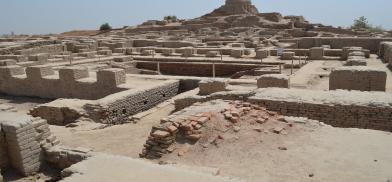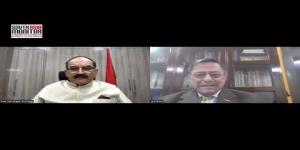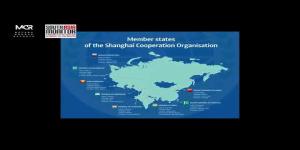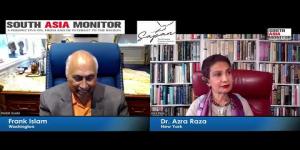To whom does this land belong? Waves of migrations have shaped India
The assertion of "first comers" is central to sectarian nationalism but contradicts the values enshrined in the Indian Constitution and the United Nations Declaration of Human Rights. We must aspire to equality for all citizens, regardless of language or religion. Digging into history to serve political ideologies should be left to academics, not wielded as a tool for divisive politics.

The BJP-led government has formed a committee to document the 12,000-year-old history of India. Given that DNA and genetic studies clearly show that we are a mixed population, why form such a committee? The apparent aim is to establish that Hindus (Aryans) are the original inhabitants of this land.
Tamil Nadu and origins of iron
Tamil Nadu Chief Minister M K Stalin, citing new research on pre-modern history, stated that archaeologists have concluded the Iron Age began in Tamil Nadu. Evidence suggests that iron melting was introduced in the region 5,300 years ago, with precise dating pinpointing its introduction to 3,345 BC. Stalin emphasized the significance of this discovery for understanding the historical timeline of the Indian subcontinent. Proudly, he declared, "I’m constantly saying that the history of India will be written from Tamil Nadu," underscoring the research’s potential to reshape historical narratives. But how relevant is this to the present?
Historically, claims of being the "first comers" have often been exploited by nationalist and ethnic groups to assert dominance. One recalls the Sinhala assault on Tamils (Hindus) in Sri Lanka, where Sinhala ethnic nationalism—based on the belief that the Sinhala were the island's original inhabitants—led to significant suffering for Tamils.
Hindu nationalism and Aryan debate
In India, Hindu nationalism has similarly promoted the idea that Islam and Christianity are "foreign" religions, while Hindus are equated with Aryans and presented as the land’s original inhabitants. This narrative was articulated by M.S. Golwalkar, the second Sarsanghchalak of the RSS, in his book We or Our Nationhood Defined. Golwalkar claimed, “We—Hindus—have been in undisputed and undisturbed possession of this land for over 8 or even 10 thousand years before the land was invaded by any foreign race,” and thus the land came to be known as Hindustan, the land of Hindus (Golwalkar, 1939, p. 6).
This view contrasts with that of Lokmanya Bal Gangadhar Tilak, who suggested in Arctic Home in the Vedas that Aryans came from the Arctic region. Golwalkar sidestepped this contradiction by claiming that the Arctic region itself was once located in the Orissa-Bihar area before shifting northward. He argued that Aryans had always been here, and it was the Arctic zone that moved away. This mental gymnastics was necessary to prove Aryan nativity and support the anti-Muslim narrative of Hindu nationalism.
Several theories about the Aryans’ origins have emerged. Many European scholars, including Indophile Max Mueller, proposed the "Aryan Invasion Theory," which suggested Aryans invaded India. However, this theory is largely discredited since the pastoral society of that era was characterized by migrations, not invasions. The more plausible theory, supported by linguistic and geological evidence, suggests Aryans arrived through waves of migration.
The biggest obstacle to the Aryan nativity claim is the existence of the Indus Valley Civilization which predates the Aryans' arrival. The urbanized Indus Valley Civilization was distinctly different from Aryan settlements. Attempts were made to manipulate evidence, such as creating a computer-distorted image of a unicorn bull seal to make it resemble a horse—an Aryan cultural symbol.
Race theories and colonial agendas
The race theory itself is now discredited. It was used by colonial powers to justify their supposed racial superiority and right to rule. Similarly, Brahmanical ideology claimed that Brahmins and upper castes were descendants of a superior race, entitling them to a higher societal status.
The Indus Valley Civilization likely ended due to a natural calamity, and many of its inhabitants migrated south. Today, DNA genetic studies have supplanted earlier archaeological and linguistic evidence. Population genetics, the most reliable method for understanding pre-modern societies, reveals the complex migrations that shaped India.
India's mixed ancestry
Tony Joseph’s Early Indians combines population genetics with existing archaeological and linguistic research. He explains that homo sapiens first arrived in India from South Africa 65,000 years ago. Subsequent migrations occurred between 7,000 and 3,000 BCE, with the final wave of pastoralists arriving from the Central Asian steppe between 2,000 and 1,000 years ago. Joseph’s work shows that Aryan and Dravidian distinctions are primarily linguistic rather than racial.
Given our mixed ancestry, why is there a need to revisit the past with a politically charged agenda? Societies have evolved from pastoral communities to kingdoms and modern nation-states. Tagore’s vision of a world without borders remains an ideal, albeit utopian.
The assertion of "first comers" is central to sectarian nationalism but contradicts the values enshrined in the Indian Constitution and the United Nations Declaration of Human Rights. We must aspire to equality for all citizens, regardless of language or religion. Digging into history to serve political ideologies should be left to academics, not wielded as a tool for divisive politics.
(The writer, a former IIT Bombay professor, is Chairman of the Centre for Study of Society and Secularism, Mumbai. Views expressed are the author's own.)










Post a Comment